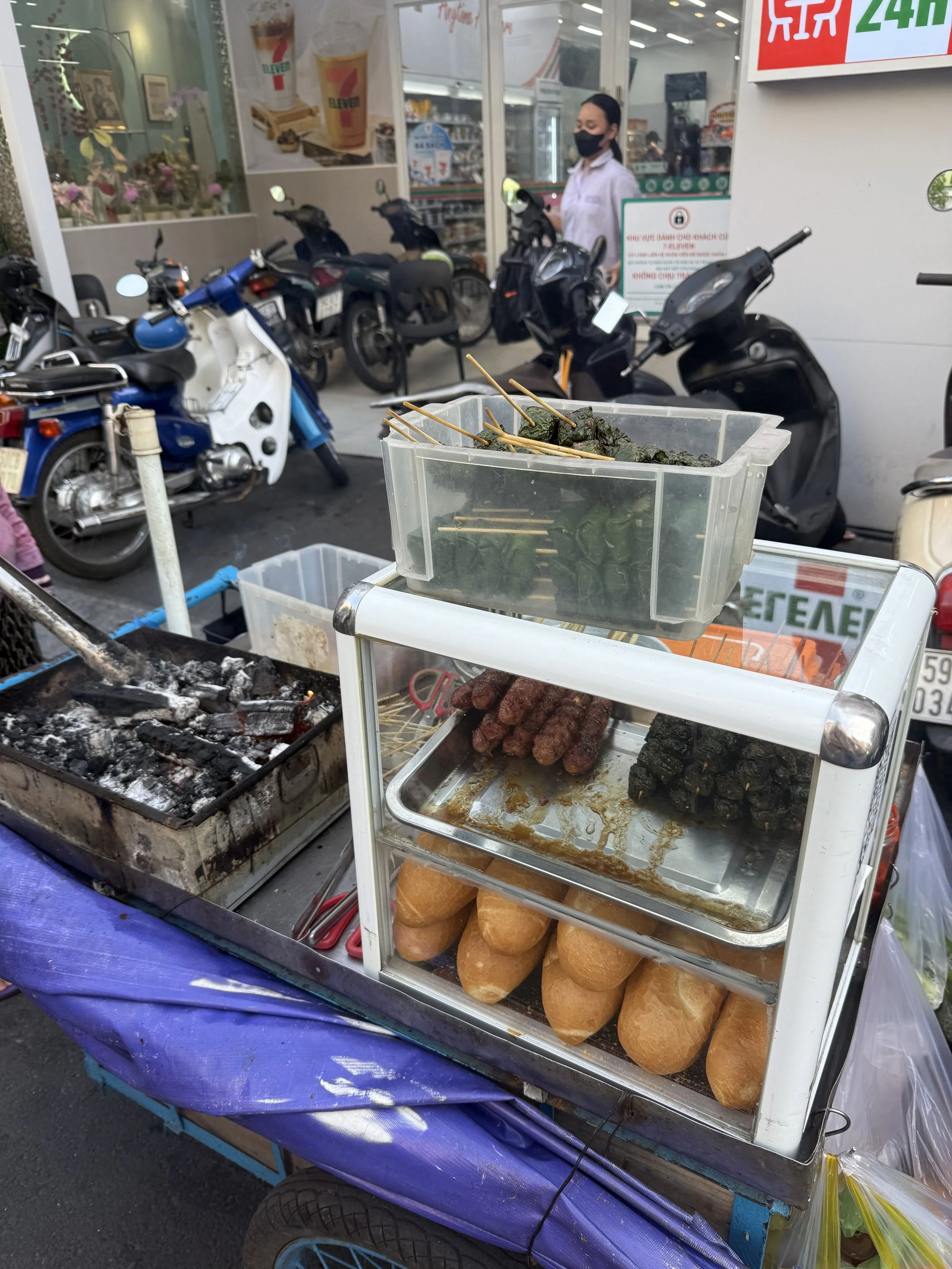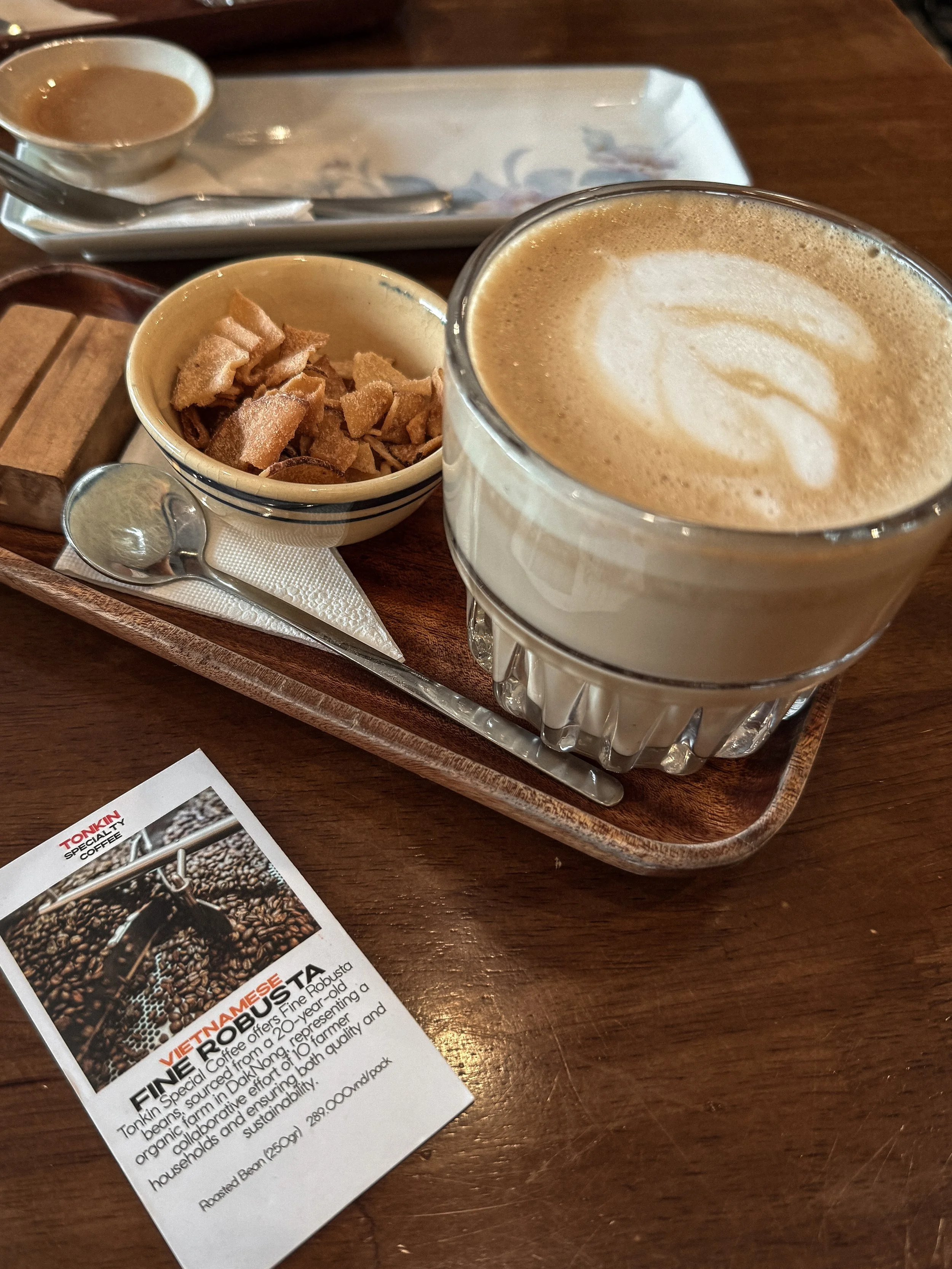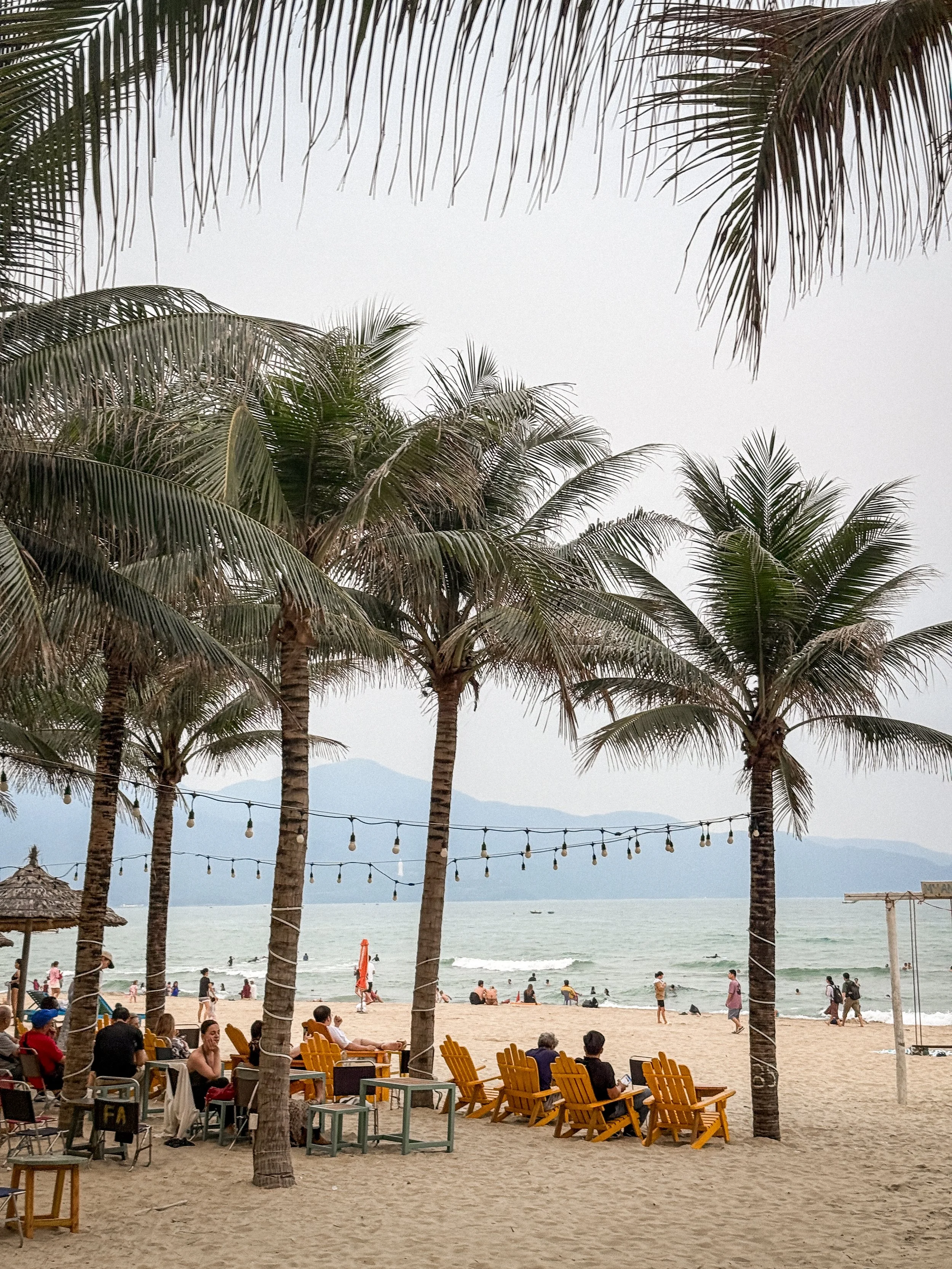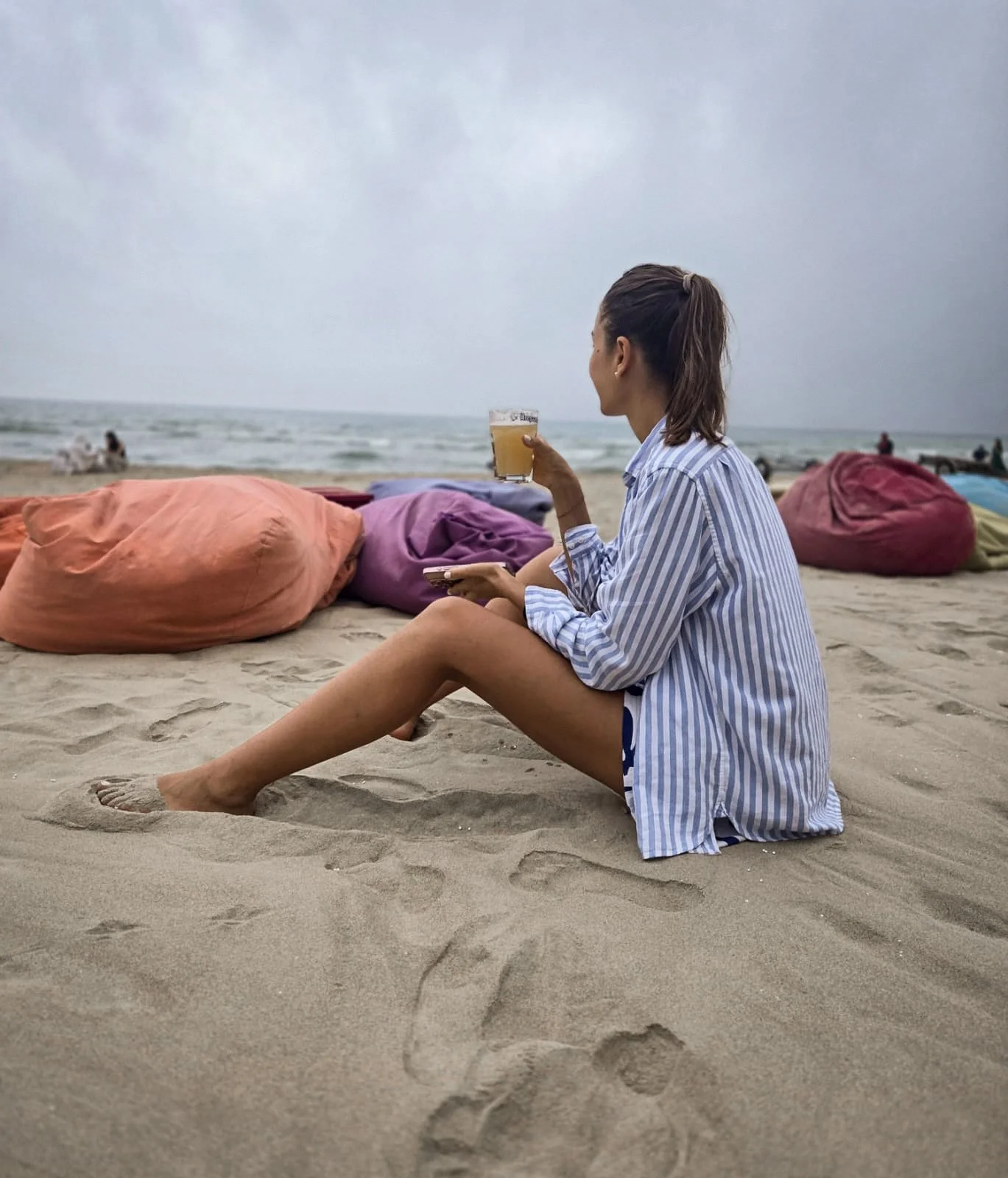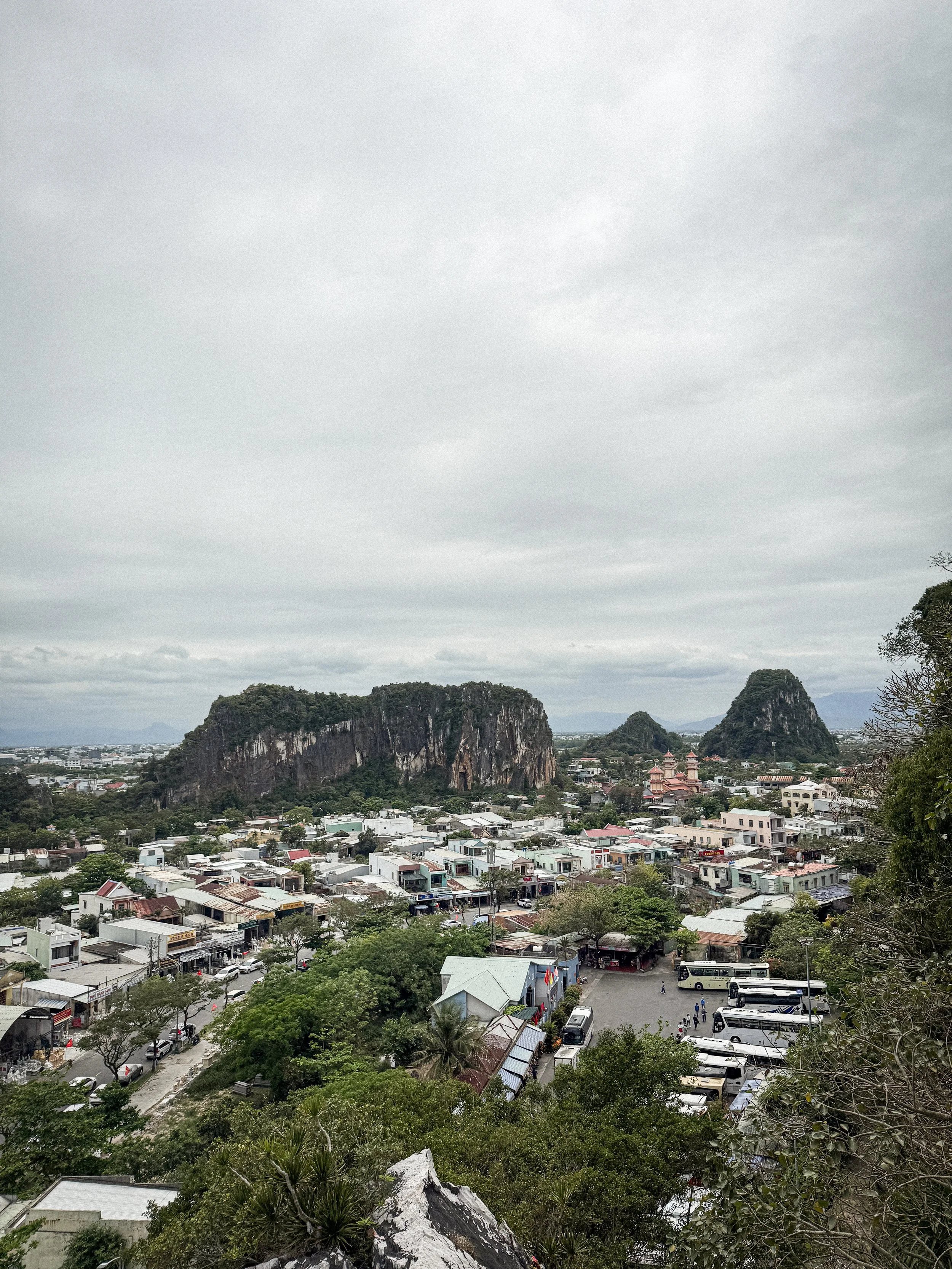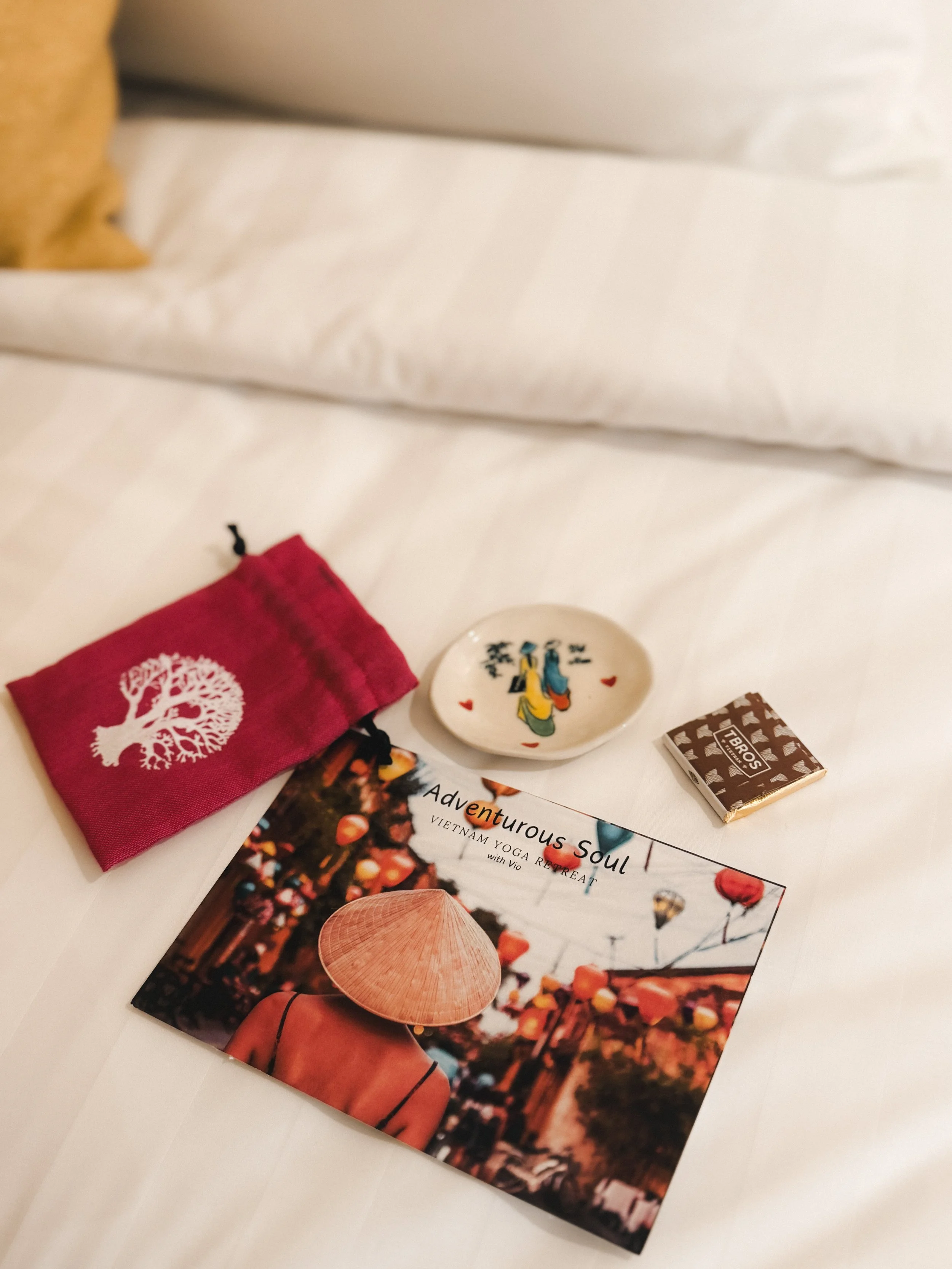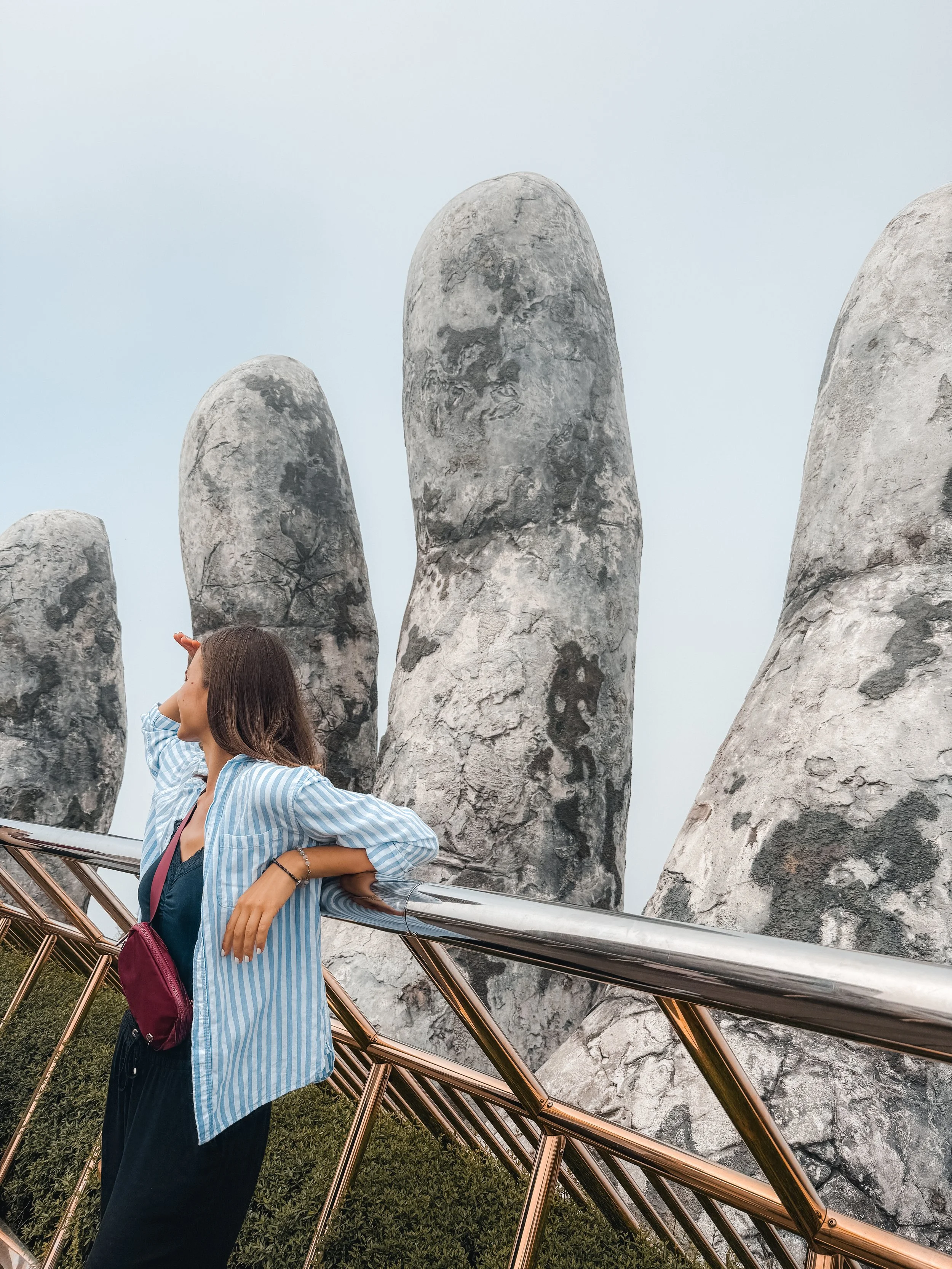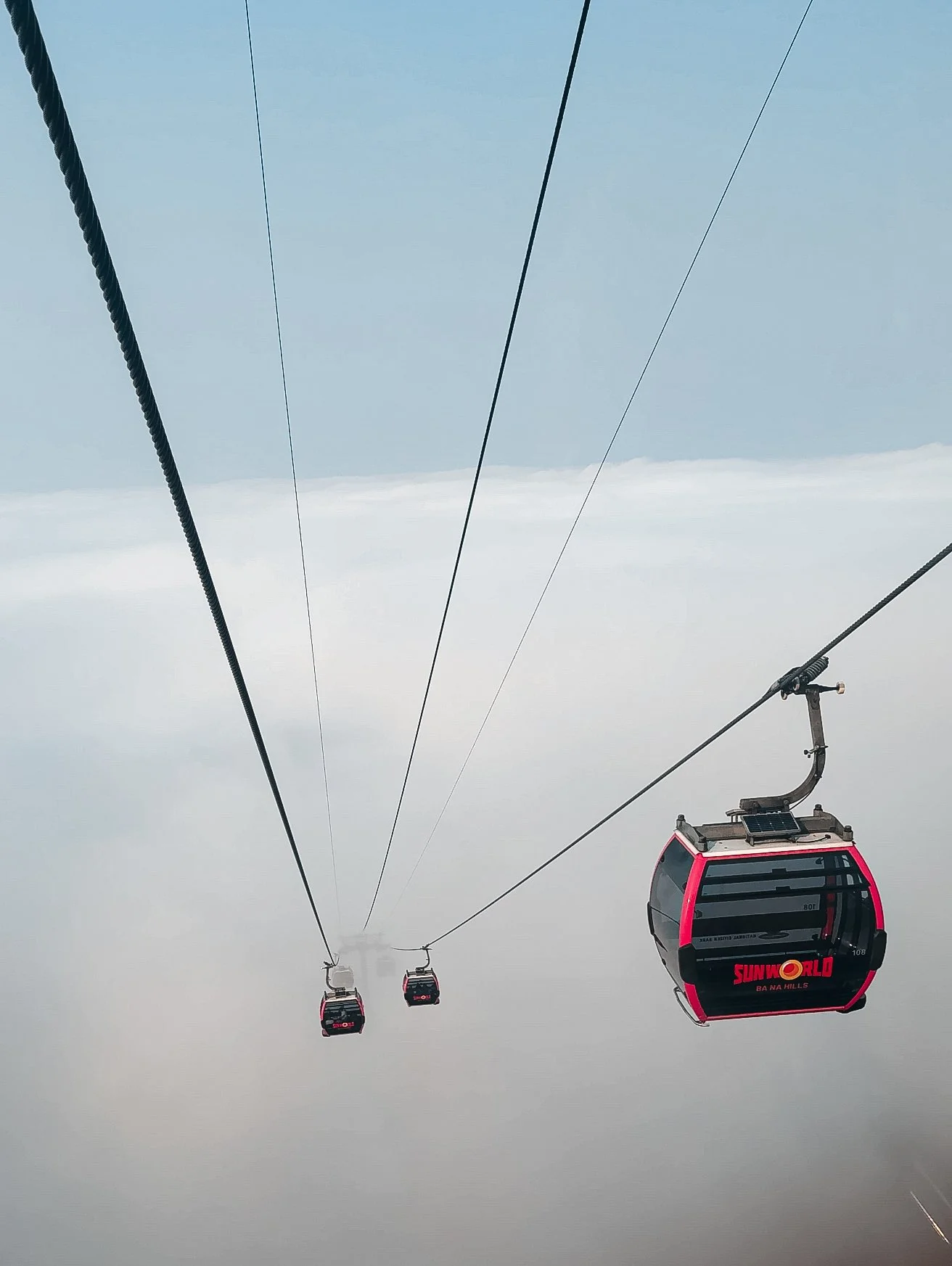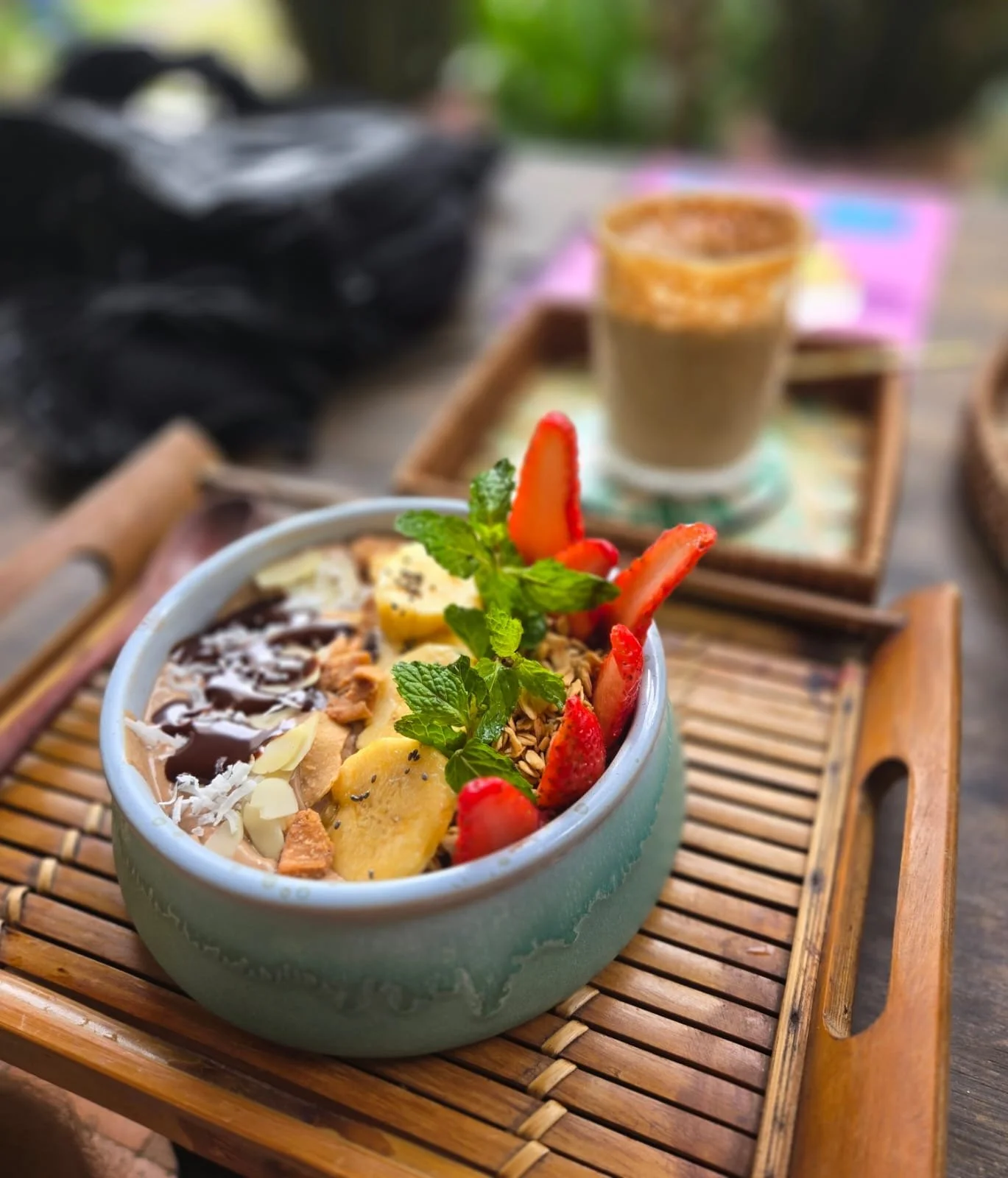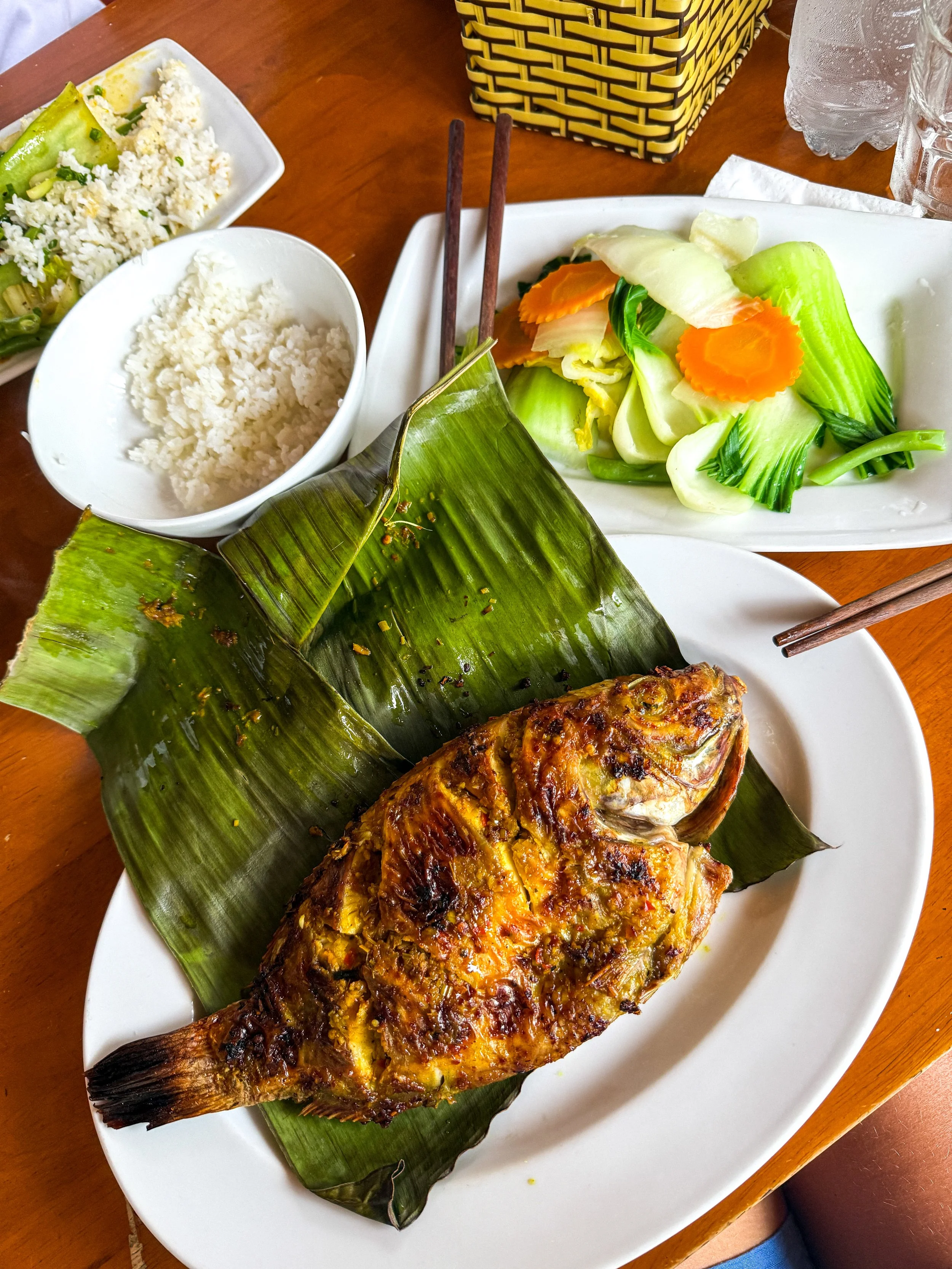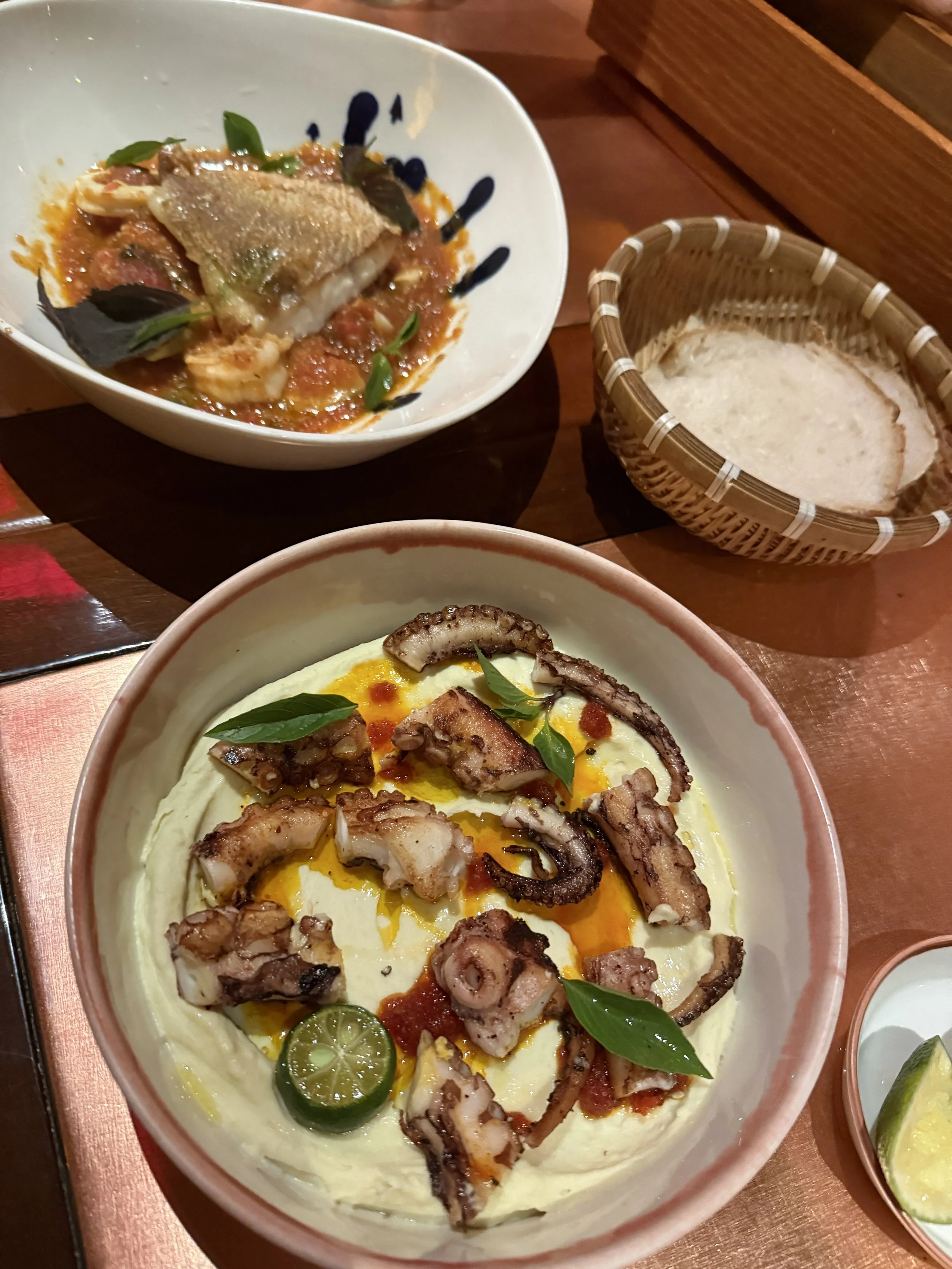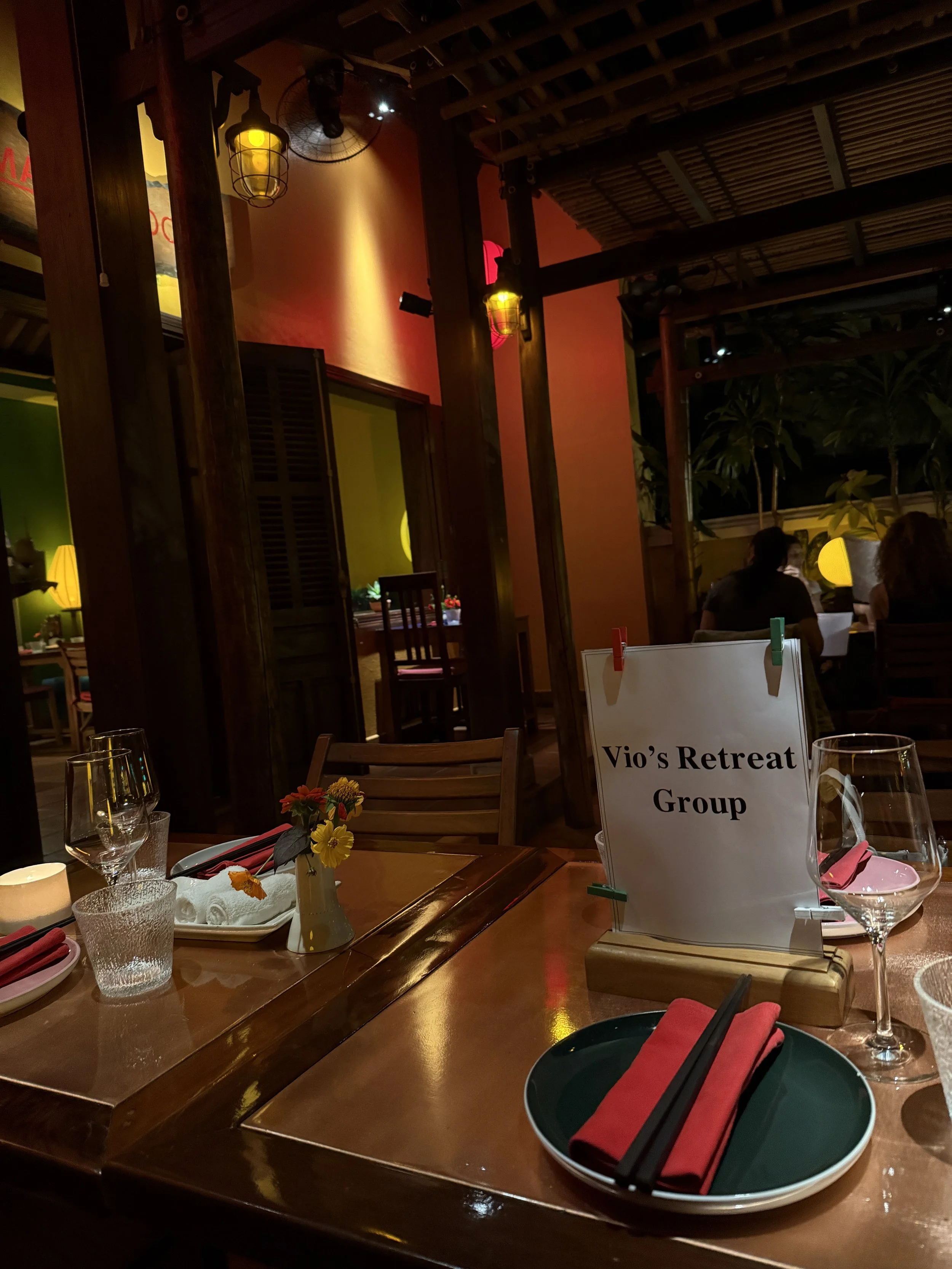30 days in Vietnam (part 1) - south and central
the vietnam trip
For this Vietnam trip, I didn’t prepare much. The main reason for traveling was a 7-day yoga retreat in Hoi An (Central Vietnam) with a yoga teacher I’ve been practicing with since I was living in Bulgaria. We decided to extend our stay to experience more than just one city.
We spent a total of 30 days exploring Ho Chi Minh, Da Nanh, Hoi An, Hanoi, and Sapa.
While researching, I realized just how large Vietnam is. The country stretches 1,650 km from north to south, and its width ranges from about 500 km at its widest point to just 50 km at its narrowest. There are two main ways to explore it — either from north to south or south to north. We chose the latter.
Useful info:
Currency: Vietnamese Dong (VND); €1=VND 29,000
Time Zone: Indochina Time (GMT+7)
Country Code: +84
Population: 100 million Size: 331,690 km²
Language: Vietnamese, English is not widely spoken, so Google Translate was our best friend for speaking to locals (including young people)
Climate: a range of weather pattern with both tropical and temperate zones
Best time to visit: seasons in Vietnam vary. For example best time to visit South and North is from Nov to April, however the weather in Central Vietnam is best from January to June/July.
Health Entry requirements: None for Europeans, no need for vaccinations
International Genki Insurance: €65 per person for 30 days; cancellation after the first month is free of charge.
Get Genki Health Insurance here.
Sim Card: I always recommend using an International Travel E-Sim. I purchase mine from Airalo, using my code KAROLI5252, you will get $3.00 off your first purchase. You can install it right before your departure and activate it immediately when you land in Vietnam. Thus, you have mobile data straight at the airport.
or purchase a cheaper local sim option from an official mobile stores such as Viettel or Vinaphone. I got an E-sim valid for 30days (6GB data per day allowance) for 220,000VND.
Flights AND Visa
The international airport in Ho Chi Minh is called Tan Son Nhat International Airport (SGN). It is around 11kms to the Central part of the city and it takes around 40 mins to get there.
To get from Europe to Vietnam, you will most likely travel to either Hanoi (North) or Ho Chi Minh (South). There are no direct flights, so typically you will have a layover in Istanbul, Doha or other, depending on the airline you travel with.
We flew with a direct flight from Bali to Ho Chi Minh with Vietjet (less than 4 hours trip) and we paid 100 usdpp.
Visas
All European citizens must have a tourist visa and your passport should be valid for minimum of 6 months at the time of arrival. We didn’t have the return tickets booked, but it might be a good idea to have an outward one.
-> Apply for an e-visa online. Issuing takes around 3 working days but I recommend doing it at least 10 business days in advance of your trip. The visa allows you to stay in Vietnam for 30 consecutive days and costs $25.
Transportation
TAXIS 🚕
A safe and comfortable option to travel is by taxi cars. At times the traffic was quite bad, but other times it was moving at normal pace despite the rush hours. I used the Grab taxi hire app as you can pay online directly through the app and it takes between 5-10mins for a car to arrive.
BUSES & TRAINS 🚌
For longer trips, the cheapest and most comfortable options would be to use buses or trains. I was very sceptical on the overnight bus experiences however we absolutely loved our trips by booking VIP Sleeper buses when we were travelling from Hanoi to Sapa.
Link to the VIP Sleeper bus: here.
You also have he option to travel by train but as far as I know some trains are in quite a bad conditions and take very long, although if you travel during the day you would have some very scenic views. A train I almost booked for my trip in north Vietnam from Hanoi to Sapa was the Chapa Express.
SCOOTER TAXI 🛵
The Grab app also offers scooter taxi hires. For me this is the fastest and most convenient mode of transportation within the cities. You order and pay for the scooter via the App and it takes a few minutes to arrive. Just remember to always put a helmet on, although the helmets in Vietnam look like basic plastic hats.
Also, if you want a bit of an adrenaline rush while sightseeing the city, then scooters are the best option for you.
RENT A SCOOTER/MOTORBIKE
To drive in Vietnam, foreigners are required to have a valid International Driver permit (IDP) that conforms to the 1968 Vienna Convention.
You can legally ride scooters with an engine capacity of 50cc or less without a driving license. In our case, we rented an electric scooter which didn’t require a license and it was great for what we needed it.
🎟️ Price: 100,000VND per day (3.80USD)
Ho Chi Minh (Saigon) - 4 days
Ho Chi Minh City, once called Saigon, used to be the capital of South Vietnam. It was renamed to Ho Chi Minh (the leader of the North) at the end of the Vietnam war (1975) when both the South and North parts of the country were reunited.
Many Vietnamese especially in the south still refer to the city as Saigon.
Today, it’s the largest and one of the busiest cities in Vietnam. The streets are always full of life—motorbikes screaming about, loads of street food on every pavement, and the architecture is a mix of old and new buildings. You’ll see tall skyscrapers next to French colonial style houses and war museums right around the corner from trendy cafés. It’s a place where the past and present come together in a really exciting way. And don’t worry so much about crossing the streets, it will take you very little time to do it as a pro.
Where to stay in Ho Chi Minh city?
For first timers, I recommend staying in District 1 - loads to do and see - local markets, cafes, restaurants, shopping centres and landmarks.
places to visit
Visit Saigon’s central area, and it’s most fun to explore on foot as you have interesting encounters on every corner.
> The Central Post Office, a stunning building designed by Gustave Eiffel—the same man behind the Eiffel Tower. Send a postcard back home from the post office. Cost is 30.000 dong for postage and you can buy postcard there.
> The Notre Dame Cathedral, built by the French in the late 1800s using bricks imported from Marseille. During our visit the cathedral was under renovation and we couldn’t go inside. It is located right across the street of the post office.
>Nearby, you’ll find the statue of Ho Chi Minh, located in front of the old colonial City Hall. In the evening, head to the Nguyen Hue promenade, a wide pedestrian street that lights up beautifully at night and often hosts street performers.
> Saigon’s Opera - another landmark in the area. It’s a 19th century French colonial opera house that is home to the city’s ballet and symphony.
> For the ladies - visit a Spa! after month travelling in Vietnam, I am convinced that the lowest prices for spa treatments are in Ho Chi Minh especially for nail services. I got my manicure and full pedicure with gel done at NA.Nail Design and I paid just 25BGN (€13). If that’s not a good price!
Street stalls are the best place to try local favourites like Pho (noodle soup) and Banh mi (Vietnamese sandwich with cripsy French-style baguette) at very low prices. Although some places don’t not look appealing to what we are used to see in Europe, there are stalls which cook tasty and safe to eat food.
Use common sense to evaluate whether food is safe to eat. It’s a rule for street food in Southeast Asia in general.
Some places we really enjoyed:
> La Moi Plant-Based Restaurant - around 10 mins walk from the Old Post Office and the Notre Dame Cathedral. We visited it for lunch and both vegan dishes we ordered were extremely tasty and filling. The prices were very reasonable considering that most plant-based restaurants have higher prices. The environment is also very inviting and it is well air-conditioned which is important on a sunny day! Try the Pad Thai and the Mushroom Soup.
> Cham - try Vietnamese cuisine in a relaxing and intimate setting. It’s located on the 10th floor (semi-rooftop view) inside the Icon Hotel in District 1. It is an exciting dining spot where we tries local dishes such as Vietnamese pancake, morning glory and Braised Fish in Clay pot.
> Rooftop bar - a very spontaneous but memorable thing we did is to relax during sunset and watch the skyline go dark from a rooftop bar. Head to the Hilton’s rooftop bar— the Song Bar - a very quiet spot to watch the sunset and enjoy a drink with a view of the city skyline. From here you can see two of the tallest buildings in the city - Landmark 81 (461.2m) and the Bitexo Financial Tower (262.5m).
The Vietnamese coffee culture
Coffee is a big part of daily life in Vietnam. It was first introduced by the French during the colonial period in the 1800s, and over time, the Vietnamese made it their own. One unique twist is the use of sweetened condensed milk, which became popular because fresh milk was hard to find in the past. That’s how the famous cà phê sữa đá (iced coffee with milk) was born—strong, sweet, and served over ice, perfect for Vietnam’s warm weather and for tourists who need extra refreshment and energy for sight seeing.
A must-try and our favourite is the egg coffee (cà phê trứng), a creamy and rich drink made by whipping egg yolk with sugar and coffee, originally created in Hanoi in the 1940s as a milk alternative.
Vietnam is now one of the world’s top coffee producers, and coffee shops are everywhere—from small street stalls with tiny plastic stools to stylish cafés with a modern vibe.
> In Saigon, I highly recommend visiting Tonkin Café. It’s a cozy spot with vintage decor and great coffee, perfect for trying traditional brews in a calm setting. Although the place is relatively small, I noticed that it is laptop-friendly in case you need to use laptop. here I also recommend trying the coconut coffee.
DA NANG - 6 DAYS
We take an hour-long flight with Vietjet airlines from Ho Chi Minh north and we arrive 930km north in the city of Da Nang.
Da Nang is a coastal city in central Vietnam that offers a bit of everything—beaches, mountains, and a modern city vibe. During the Vietnam War, it was the locations of the American base, and you can still find signs of that history around the area. But today, it has a strong developing tourism industry and there are loads of expats and digital nomads living here.
One of my favourite parts of Da Nang was the long stretch of beach where locals and visitors relax, walk, and play volleyball. Even with cooler weather, we loved strolling along the shore.
Da Nang is a great base, whether you want to chill by the sea, explore markets, or visit temples and caves.
What to do in Da Nang?
> The Lady Buddha statue, standing 67 meters tall, is one of the most iconic sights in Da Nang. Located just 15-20 minutes outside the city, she looks over the city and the sea, believed to protect local fishermen and bring peace. The area is peaceful despite the tourists who visit it. This statue is actually the tallest Bodhisattva statue in Vietnam - 67m tall and was built in the early 2000s, combining traditional and modern Buddhist architecture. Free entry! 🕒
Best time to visit: in the morning or during sunset hours ; 🎟️ Free entry
> The Dragon Bridge is a fun and unique sight, especially in the evening. Shaped like a golden dragon stretching across the Han River, it lights up in different colours at night and even breathes fire and water on weekend nights (usually around 9 PM). No entry fee but have in mind that it gets quite busy although this is part of the atmosphere.
The dragon represents power and good fortune in the Vietnamese culture.
> The Marble Mountains are just 15 minutes outside of Da Nang. It is a group of five limestone and marble hills named after the five elements: metal, wood, water, fire, and earth. They are filled with caves, tunnels, temples, and stunning viewpoints. You can climb the steps or take an elevator (I recommend) to the top of Thuy Son (Water Mountain), the most popular one. Historically, the area was used as a place of worship and meditation. During the Vietnam War, it was also said to be a hiding spot for the Viet Cong.
🎟️ Entry Fee: 40,000 VND ($1.60 USD) | Elevator (optional): 15,000 VND ($0.60 USD)
🕒 Best time to visit: early morning/late in the afternoon
> Mac My An Market - visit the local fruits and veggie market - there are a few in the city but the Mac My An Market is the closest to the touristy bit. The prices at the market are quite low and there are a few mini stalls/bakeries from where you can buy cooked meals.
Where to eat?
>Irini Greek Restaurant - yes, right. we went multiple times to a greek restaruants as we fancies something less traditional and more familiar. the place is small and cozy and they serve some typical greek meals along with some variations of greek recipes. It’s a place where you can get wraps, falafels, amazing moussaka (including vegetarian option) and chicken souvlaki.
> Roots Plant-based cafe - another western favourite of ours. Here we found very good coffee with oat milk, big green salads, and rich smoothie bowls (our favourite - the cacao dream).
>Fresh smoothies and juices - in Da Nang literally at every corner you will see vendors with a trolley or a stall, fruits and a juicer. You can get a large fresh healthy juice or a smoothie for 20-30,000 dong which is extremely low price as some cafes charge more than tripple for the same drink.
> We also tried many Vietnamese places. Our favourite dishes were: pho, fresh spring rolls, veggie fried rice, Vietnamese pancake, Gỏi Xoài Xanh - green mango salad with seafood and Bò Lá Lốt - grilled beef or pork wrapped in betel leaves.
>Seafood restaurants - seafood in Da Nang is super fresh as the fisherman deliver seafood daily to the restaurants. Also, many places have their own aquariums with live fish, so they will prepare whatever you see and like.
Hoi An - 10 days
We arrived in HOI AN after a 30’ minute trip from Da Nang by Grab taxi. We stayed in total of 10 days (8 days of which I attended a yoga retreat).
Hoi An is a beautiful old town that feels like the architecture hasn’t changed in hundreds of years. The only change is the amount of tourists and businesses operating today.
It used to be a major trading port back in the 15th to 19th centuries, where traders from all over Asia and Europe came to do business. Because of that, you’ll find a mix of Vietnamese, Chinese, and Japanese influences in the buildings and culture. Today, Hoi An is known for its lantern-lit streets, tailor shops, and vibrant atmosphere. It is a place where history feels alive, and every corner has a story.
WHERE TO STAY?
As part of the yoga retreat, we stayed at the Little Oasis Hotel, and it was one of the highlights of our Hoi An trip. Just 20 minutes walk from the Old Town, this charming boutique hotel felt like our own private hideaway and a true oasis. The rooms were bright and beautifully designed, the two rooftop pools were the perfect length for a swim and I was super excited about the spa facilities - the sauna and steam room as I haven’t it done for a while.
Breakfast was included and surprisingly rich. The restaurant overlooks their own private vegetable garden and open fields, where water buffalos roamed peacefully in the background. It gave everything such a calm, but luxurious countryside feel.
The staff were incredibly warm and helpful. As a person who’s worked in hospitality, I can sense the personal and honest touch of staff. It really felt like a little sanctuary and we were completely in love with it.
WHAT TO DO?
>Hoi An’s Old town - Hoi An’s Old Town feels like a painting that came to life. With its mustard-yellow walls, wooden shophouses, and colourful lanterns hanging above the streets, it’s no surprise it’s a UNESCO World Heritage Site. From the 15th to 19th century, the town was a major trading port, and you can still see Chinese, Japanese, and European influences in the architecture.
We loved simply wandering through the narrow streets, browsing shops, trying local snacks and nuts, and just soaking in the atmosphere at a slow pace. Keep in mind that it can get really hot during the day, so the best time to visit is in the morning or late afternoon.
>Sunset and lanterns by the river - a favourite memory from Hoi An was our first evening there. As the sun began to set and the sky turned orange, we witnessed one of Hoi An’s most magical traditions—floating lanterns on the river. Locals and visitors release lanterns into the water for good luck, and the scene felt like something out of a fairytale.
You can hop on a boat for a short ride and release lanterns from there, or buy one from the many vendors near the bridge. It does get quite busy and touristy—but it’s exciting and undeniably beautiful. We were super overwhelmed by everything that was happening in the area.
>Ba Na Hills & The Golden Bridge - Have you seen the giant pedestrian bridge held up by two enormous stone hands? That’s the Golden Bridge, located about an hour from Hoi An. It’s part of Ba Na Hills, a French-style mountain resort built during the colonial era as a cool escape from the heat. To reach it, you take one of the longest cable car rides in Southeast Asia. Even though it was cloudy during our visit, the misty views made everything feel magical and surreal.
Now for my honest opinion: if I hadn’t visited it as part of a group, I probably wouldn’t have enjoyed it as much. The Golden Bridge is only 100 meters long and very crowded. While we had fun and took a lot of pictures, the whole area feels more like a man-made theme park, filled with food options and photo spots. Tbh, we had a buffet lunch at the Four Seasons restaurant and what we tried was extremely tasty and definitely worth the price. There were tens of food options.
That said, if you're into those kinds of attractions, Ba Na Hills is a fun day trip from either Hoi An or Da Nang.
🎟️ Entry fee (incl. the cable car): Adult (Above 1.4 m): 950,000 VND (∼37 USD) or add buffet lunch: Adult: 1,250,000 VND (∼48 USD)
🕒 Opening Hours: Monday to Sunday: 7am to 10pm
> A day on the beach - just a 15 minute ride from the Old Town, Hoi An’s beaches offer a totally different experience. One morning, we spent a quiet few hours at An Bang Beach, relaxing, chatting, and sipping on coconuts.
Another day we took a big walk and discovered the area around Cua Dai Beach, which became my favourite—peaceful, lots of shade from the palm trees, and perfect for a swim in the Vietnamese sea.
🍜 Where to eat in Hoi An?
> Any cute spot in the Old Town - you can’t go wrong with picking a cozy spot in the Old Town. Whether it’s a hidden cafe or a riverside restaurant, most places serve delicious Vietnamese classics like cao lầu, white rose dumplings, or a simple but hearty pho. It’s the perfect area to just wander, get tired and sit anywhere that looks nice and peaceful to you!
Visit the area around the An Bang beach for a change and get some amazing fresh seafood in one of the many restaurants on the strip. This area is quieter yet there is so much to do, so definitely you need to visit.
>Passion Restaurant & Bar (An Bang Beach) - for fresh seafood in a quiet local setting, visit this place. It is one exactly in the area near An Bang Beach. We loved the grilled fish in banana leaves at Passion—so flavourful, juicy, and served with local herbs and sauces. Perfect for a sunset dinner after a beach day. Everything is made from scratch and on the spot, so be patient as food takes a while.
>Irini Greek Restaurant 🇬🇷 - the same restaurant as the one in Da Nang. We visited the Hoi An’s version, too. This spot is spacious, relaxed, and a great break from Vietnamese food if you're craving something Mediterranean.
> YESH! Tribe - it was my boyfriend’s go to spot for breakfast and Vietnamese coffee. It’s a cute and colourful café perfect for smoothie bowls, brunch vibes, and Vietnamese specialty coffee with a modern twist. It’s very close to what you’d get in a Bali cafe.
> Mango Rooms 🍸 - one the first night of the yoga retreat we treated ourselves to a more upscale dinner at a restaurant recommended by our hotel staff. It was quite an exciting start of our eating journey. Mango Rooms serves a creative fusion menu with a lot of seafood and bold flavours. I didn’t try the cocktails but they seemed just as good as the food!
The artistic interior is very charming and intimate, and their outdoor tables sit right by the Thu Bồn River, perfect for a romantic or scenic dinner.
alternative trip length
If you’re planning a similar trip but have less time, here’s an alternative suggestion for how long to spend in each place:
Ho Chi Minh City – 3 days
Da Nang – 3–4 days
Hoi An – 4 days
This way, you can still experience the highlights of each location without feeling rushed, while leaving room to explore at your own pace!
Let me know if you visit any of these locations! 🌆 ✨












